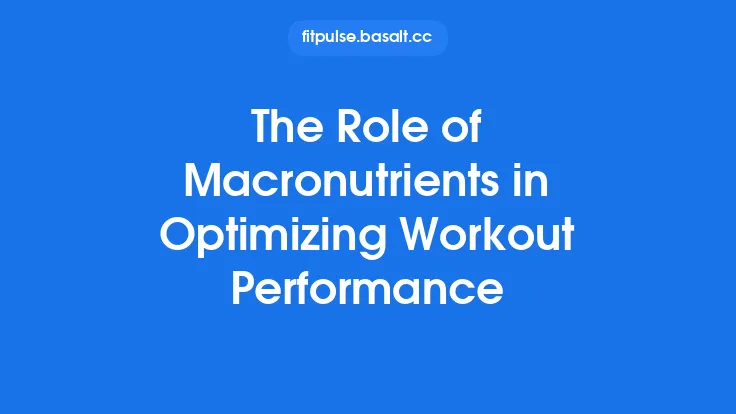Training load and recovery are the twin pillars of any effective athletic program. While coaches and athletes have long relied on intuition and experience to balance stress and rest, the explosion of wearable sensors, cloud‑based data pipelines, and advanced analytics now makes it possible to quantify, model, and fine‑tune this balance with scientific rigor. By turning raw streams of physiological and biomechanical signals into actionable intelligence, data analytics helps prevent overtraining, accelerate adaptation, and ultimately push performance ceilings higher than ever before.
Understanding Training Load: Definitions and Components
Training load is the cumulative stress imposed on the body during a training session or over a longer period. It can be broken down into two complementary dimensions:
- External Load – The work performed, measured objectively by devices such as GPS units, accelerometers, power meters, or force plates. Typical external load variables include distance covered, number of strides, mechanical power output, and impact forces.
- Internal Load – The physiological response to that work, captured through heart rate, blood lactate, perceived exertion scales, hormonal markers, or autonomic nervous system indices (e.g., HRV).
Both dimensions are essential: external load tells you what was done, while internal load reveals how the athlete’s body reacted. A comprehensive analytics framework must ingest and align these data streams to produce a unified load profile.
Data Sources for Load Monitoring
| Source | Typical Metrics | Sampling Frequency | Typical Use |
|---|---|---|---|
| Wearable GPS/IMU | Speed, acceleration, distance, jump count | 1–10 Hz | External load in field sports |
| Power meters (cycling, rowing) | Instantaneous power, torque, cadence | 1 Hz or higher | Precise external load |
| Heart rate monitors | HR, HRV, R‑R intervals | 0.5–1 Hz | Internal load, recovery status |
| Blood biomarkers (lactate, cortisol) | Concentrations, ratios | Lab‑based, periodic | Acute fatigue, stress response |
| Sleep trackers | Sleep stages, total sleep time, disturbances | 0.1–1 Hz | Recovery capacity |
| Subjective questionnaires (RPE, wellness) | Scores, mood, soreness | Once per session | Contextual internal load |
A robust analytics pipeline normalizes these heterogeneous data streams, timestamps them, and stores them in a time‑series database, enabling downstream modeling and visualization.
Quantifying Internal vs. External Load
To move beyond raw numbers, analysts often compute load indices that combine multiple variables:
- Training Impulse (TRIMP) – Integrates duration and intensity of heart rate zones, providing a weighted internal load score.
- Session Rating of Perceived Exertion (sRPE) – Multiplies session duration by an athlete’s RPE rating, yielding a simple yet powerful load metric.
- Power‑Based Load (e.g., Training Stress Score) – Uses normalized power and duration to capture the metabolic cost of cycling or rowing sessions.
- Mechanical Load Index – Aggregates accelerometer‑derived metrics such as PlayerLoad™ or impact count to quantify external mechanical stress.
By calculating these indices for each session and aggregating them over rolling windows (e.g., 7‑day, 28‑day), analysts can detect trends, spikes, or chronic overload that may predispose an athlete to injury or performance plateaus.
Analytics Techniques for Load Management
1. Rolling‑Window Statistics
Simple moving averages (SMA) and exponentially weighted moving averages (EWMA) smooth daily load values, highlighting chronic load (e.g., 28‑day SMA) versus acute load (e.g., 7‑day SMA). The Acute‑to‑Chronic Workload Ratio (ACWR) is derived from these averages and serves as a risk indicator: values consistently above 1.5 are associated with higher injury incidence.
2. Time‑Series Decomposition
Seasonal‑trend decomposition using LOESS (STL) separates long‑term trends, seasonal patterns (e.g., weekly training cycles), and residual noise. This helps coaches understand whether a load increase is part of a planned periodization or an unexpected deviation.
3. Multivariate Regression & Mixed‑Effects Models
By regressing performance outcomes (e.g., time‑trial results) against both internal and external load indices while accounting for random effects (individual athlete variability), analysts can quantify the dose‑response relationship and identify the load range that maximizes adaptation.
4. Machine Learning Predictive Models
Gradient boosting machines (GBM) or recurrent neural networks (RNN) can forecast future fatigue or injury risk based on historical load, recovery, and contextual variables (travel, sleep). Feature importance analysis reveals which metrics (e.g., HRV, impact count) are most predictive for a given sport.
5. Bayesian Updating
A Bayesian framework treats an athlete’s fatigue state as a latent variable, updating its probability distribution each day as new load and recovery data arrive. This probabilistic approach accommodates uncertainty and provides confidence intervals for decision‑making.
Modeling Fatigue and Adaptation
The classic Fitness‑Fatigue Model (Banister model) expresses performance as the net result of two opposing processes:
- Fitness (Positive Adaptation) – Accumulates slowly, decays over weeks.
- Fatigue (Negative Effect) – Accumulates quickly, decays over days.
Mathematically:
\[
P(t) = P0 + \sum{i=1}^{t} \left[ kf \cdot e^{-(t-i)/\tauf} - kd \cdot e^{-(t-i)/\taud} \right] \cdot L_i
\]
where \(Li\) is the load on day *i*, \(kf\) and \(kd\) are scaling constants for fitness and fatigue, and \(\tauf\), \(\tau_d\) are their respective time constants. By fitting this model to an individual’s historical data, analysts can predict the optimal timing of high‑intensity sessions to ensure that peak fitness coincides with competition.
More recent extensions incorporate non‑linear decay, multiple load dimensions, and individualized time constants derived via hierarchical Bayesian inference, yielding highly personalized training prescriptions.
Recovery Metrics and Their Interpretation
Recovery is not merely the absence of fatigue; it is an active process reflected in several measurable signals:
- Heart Rate Variability (HRV) – Higher RMSSD or SDNN values generally indicate a well‑recovered autonomic state.
- Resting Heart Rate (RHR) – Elevated RHR can signal lingering stress or infection.
- Sleep Architecture – Proportion of deep (N3) and REM sleep correlates with tissue repair and cognitive restoration.
- Neuromuscular Potentiation – Countermovement jump (CMJ) height or peak power measured after a warm‑up can reveal residual neuromuscular fatigue.
- Biochemical Markers – Creatine kinase (CK) and C‑reactive protein (CRP) levels provide insight into muscle damage and systemic inflammation.
Analytics pipelines often compute Recovery Scores by normalizing each metric to an individual baseline and aggregating them using weighted sums or principal component analysis (PCA). Tracking these scores alongside load indices enables a closed‑loop system: when recovery dips below a predefined threshold, the algorithm recommends load reduction or additional recovery interventions.
Integrating Load and Recovery Data for Decision Making
A practical decision‑support workflow typically follows these steps:
- Data Ingestion – Real‑time streaming from wearables into a central repository.
- Pre‑Processing – Artifact removal (e.g., GPS signal loss), interpolation, and alignment to a common timeline.
- Feature Engineering – Calculation of load indices (TRIMP, sRPE), recovery scores (HRV‑based), and derived ratios (ACWR).
- Risk Modeling – Application of a fatigue‑injury predictive model that outputs a probability of adverse outcomes for the next 48 hours.
- Prescriptive Output – Generation of a recommendation (e.g., “maintain planned intensity”, “reduce volume by 20 %”, “add an active recovery session”).
- Feedback Loop – Athlete logs compliance and subjective feedback, which are fed back into the model to refine future predictions.
Because the system continuously learns from each new data point, its recommendations become increasingly tailored to the athlete’s unique adaptation profile.
Practical Implementation: From Data Collection to Actionable Plans
- Select Appropriate Sensors – Prioritize devices with validated accuracy for the sport (e.g., chest‑strap HR for high‑intensity interval training, foot‑pod for running cadence).
- Standardize Protocols – Ensure consistent wear time, calibration, and data upload schedules to minimize missing data.
- Define Baselines – Collect at least two weeks of “normal” training data to establish individualized reference ranges for load and recovery metrics.
- Choose Analytic Tools – Open‑source platforms such as Python (pandas, scikit‑learn, PyTorch) or R (tidyverse, caret) provide flexible pipelines; commercial sports analytics suites may offer pre‑built dashboards.
- Validate Models – Use cross‑validation on historical data to assess predictive accuracy (e.g., ROC‑AUC for injury risk).
- Integrate with Coaching Workflow – Present recommendations in concise formats (e.g., daily “load budget” and “recovery status” cards) that fit into existing planning meetings.
- Educate Athletes – Explain the meaning of metrics and the rationale behind adjustments to foster buy‑in and accurate self‑reporting.
Challenges and Future Directions
- Data Quality and Missingness – Wearable dropout, signal noise, and inconsistent self‑reports can bias models. Imputation techniques and robust outlier detection are essential.
- Individual Variability – Genetic factors, training history, and lifestyle influence load‑response curves. Adaptive models that update individual parameters in real time are a promising solution.
- Multimodal Fusion – Combining physiological, biomechanical, and psychological streams remains computationally intensive; advances in edge computing and federated learning may alleviate privacy concerns while enabling richer models.
- Explainability – Coaches need transparent reasoning behind algorithmic suggestions. Techniques such as SHAP values or rule‑based surrogate models can translate complex predictions into understandable guidelines.
- Integration with Periodization Theory – Future analytics should not only react to daily data but also align with macro‑cycle planning, automatically suggesting micro‑cycle adjustments that respect long‑term periodization goals.
As sensor technology becomes more unobtrusive and computational methods grow more sophisticated, the synergy between data analytics and training science will deepen. By systematically quantifying load, modeling fatigue, and monitoring recovery, athletes and coaches can move from reactive “feel‑good” adjustments to proactive, evidence‑based training strategies that consistently push the boundaries of human performance.





